This data is for the soon-to-be-in-production USB Power 2, a 100W USB-PD power supply for modular synths, designed in collaboration with MMI Modular.
The data we’ve collected so far has focused on the +12V rail, since this rail feeds the -12V inverter and the +5V buck, making its efficiency more critical. And being a buck, it’s likely to be noisier than the -12V with its inverting, quasi-sepic topology. However, we will characterize the other rails in the next few weeks and add data here.
+12V Rail Efficiency
Below is a plot of the efficiency of the +12V buck-boost converter for the most typical/standard USB PD input voltage conditions.
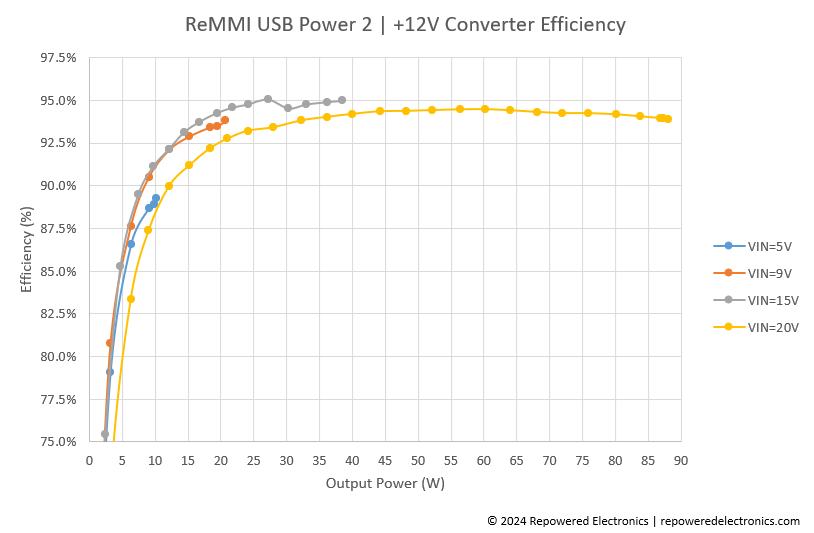
The reason this test didn’t go past 88W in the 20V | 5A input case comes down to a few things. First, having an inline shunt measurement device (requiring ~200mOhm of additional cable) between the USB source and the DUT. Added to the ~200mOhm of cable already there, this introduces quite a bit lower VIN at the buck-boost, meaning 5A doesn’t go quite as far. There is also a few hundred milliwatts drawn for housekeeping and keeping the lights on for the -12V and +5V converters. All this meant that at 88W, input voltage to the buck-boost was 18.85V and we were pulling 4.97A from the source.
Ripple and Noise Data
To better illustrate the ripple and noise performance of the USB Power 2, we’ll compare it to some reasonable baseline: the “legacy”, lower-power MMI Modular USB Power (1), which has been something of a USB-power staple in the modular synth community for the last few years. It uses a Meanwell DKM10E-12 to handle the +/- 12V generation – so really this is a comparison against a COTS device from a reputable company in the switching power supply space. And although the USB Power 1 is 1/10th the power output capability, we’ll treat it as a baseline for noise and ripple performance.
USB Power 1 probing diagram
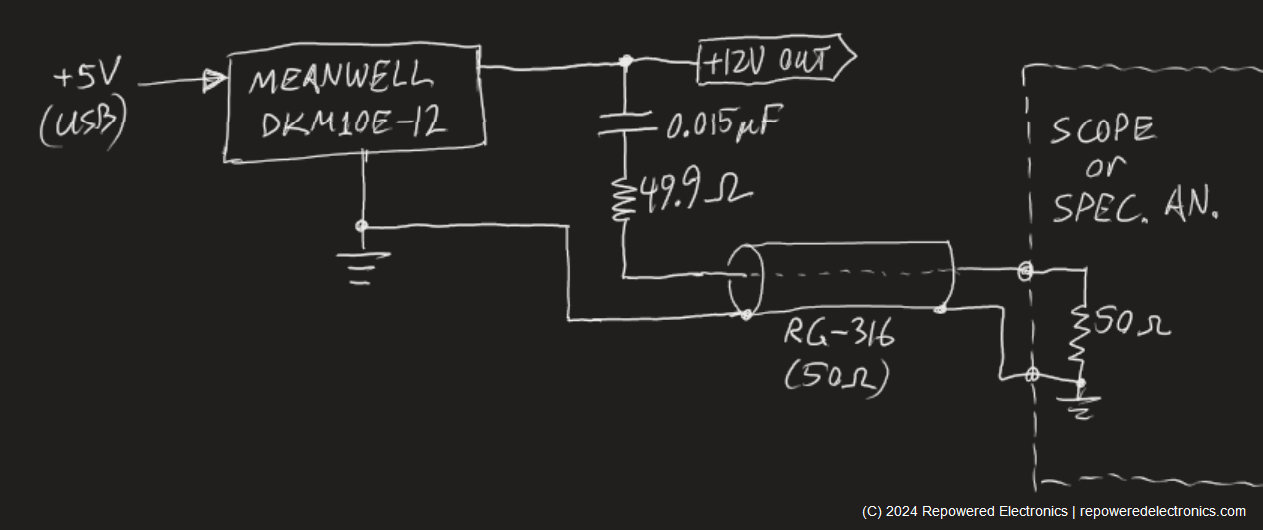
USB Power 2 probing diagram
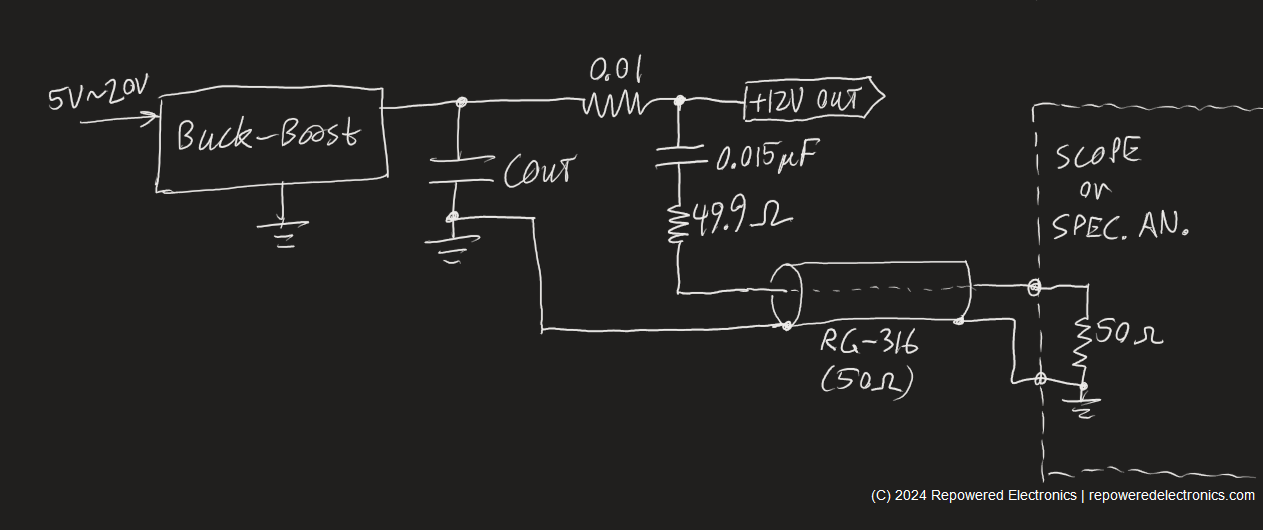
Above are diagrams of how we probed the rails. Since we were only interested in the AC content, and we didn’t want to whack 12V DC across the 50 ohm terminations in our equipment, we used 15nF capacitors to couple only the AC content of interest into the measurement device. We soldered the RC networks to the boards as close as reasonably possible to the output of each converter, and the RC networks subsequently into an length of RG-316 coax that fed into the instruments. For the uninitiated, 15nF + 100 Ohms forms a high pass filter with a cutoff of about 100kHz. The 15nF caps were X7R and rated at 50V, so the derating was maybe 20%. We can be conservative and say the cutoff was ~133kHz.
Another note is that the scope was set to 50 Ohm input impedance with a 2x attenuation setting. This means that the voltage readings in the following plots are true-to-life, and not a divided-by-2 version of the actual ripple.
+12V Rail Ripple
The standard-issue setup for measuring power supply ripple with a scope is to limit the measurement to a 20MHz bandwidth. Since most SMPS’s switch in the hundreds of kHz to a few MHz, this makes intuitive sense when focusing on the ripple. Higher-frequency content falls into the more general bucket of “noise”, which we have data for next.
Below is a side-by-side comparison of the USB Power 1 and 2 from no load to ~max load.
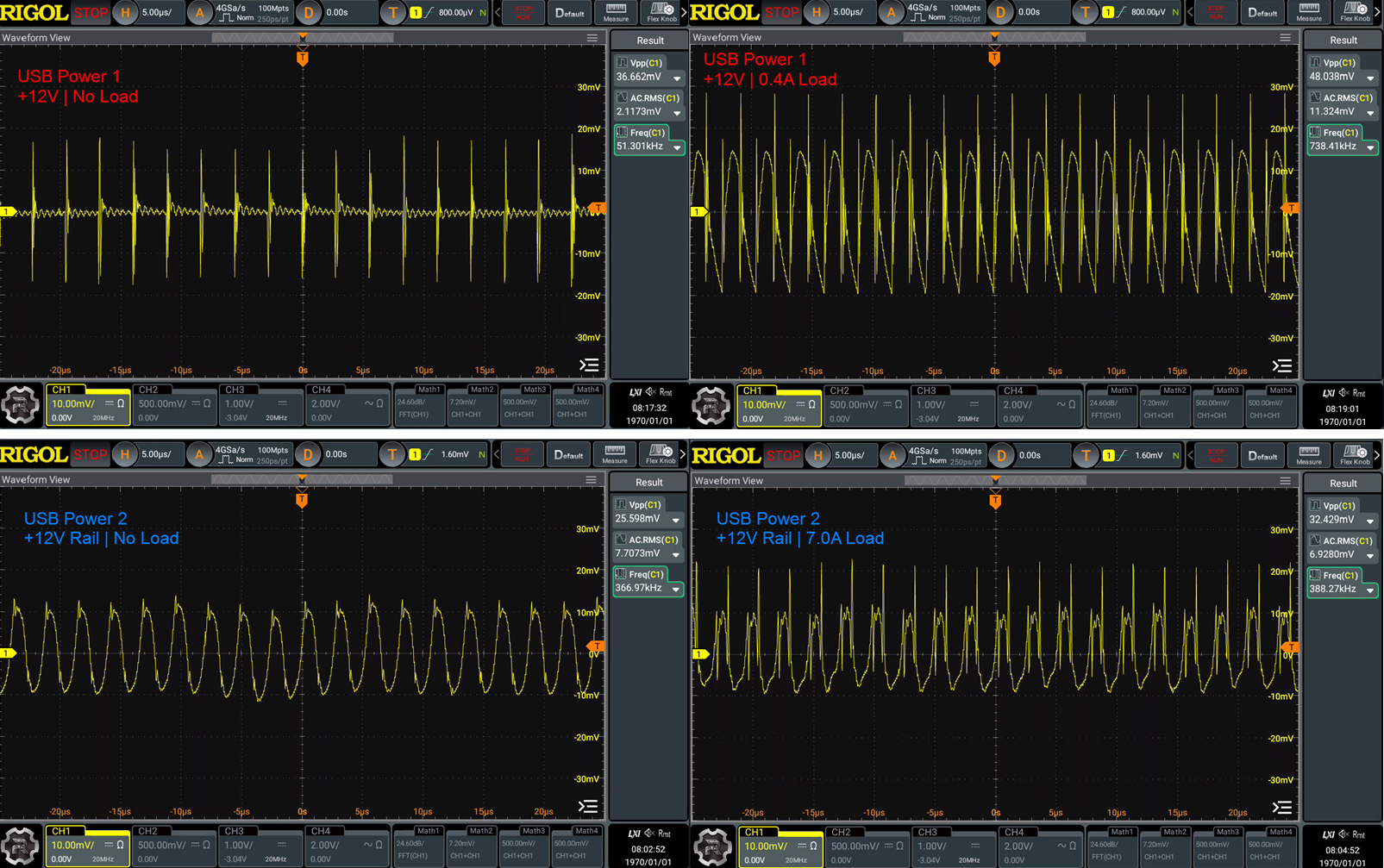
+12V Rail Noise
Next we took a look at the noise on the +12V output of each supply on the spectrum analyzer across a broad spectrum (from ~30kHz to 300MHz) under no-load and high-load. The probing was the same as before for the ripple measurements.
No Load Conditions
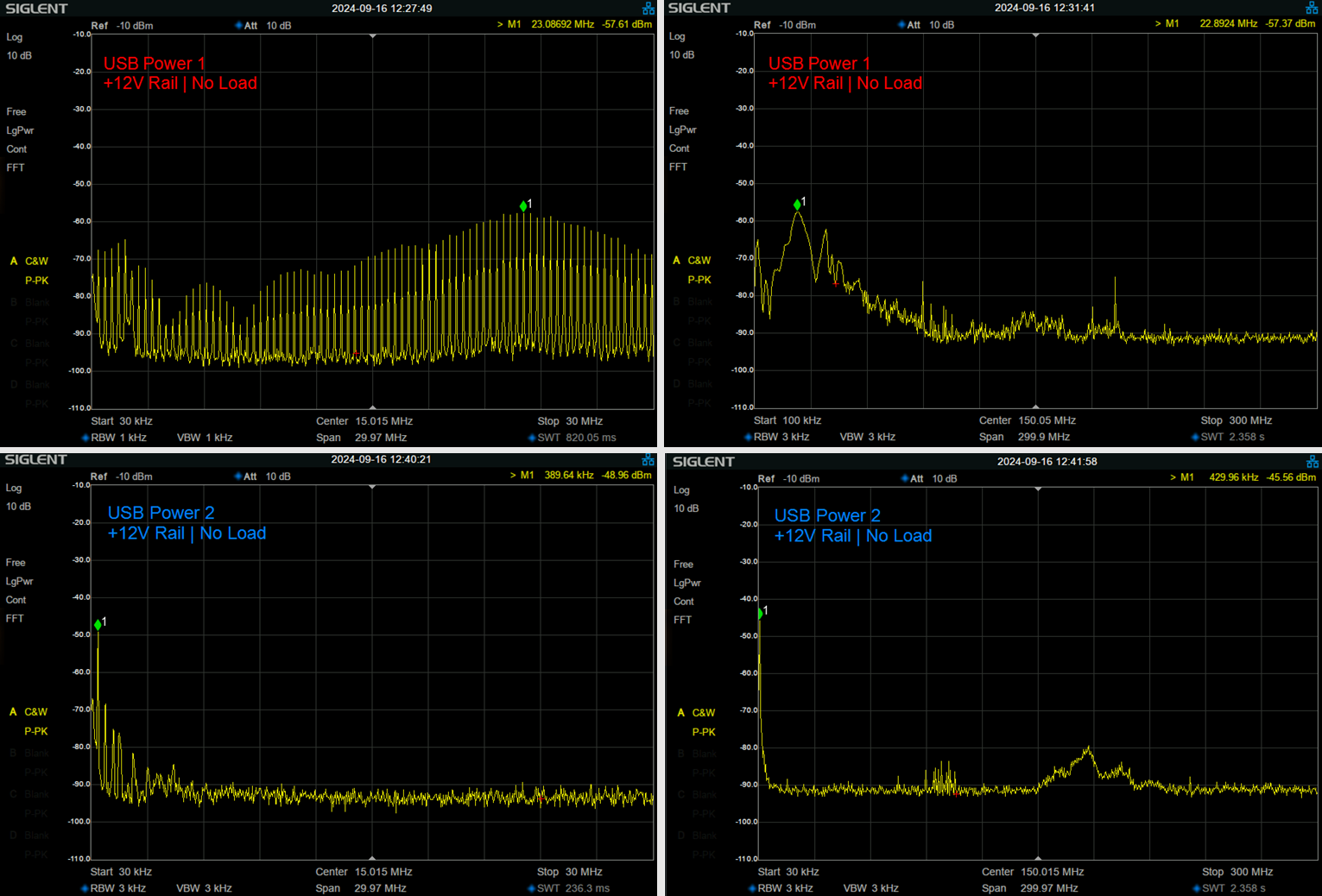
High-Load Conditions
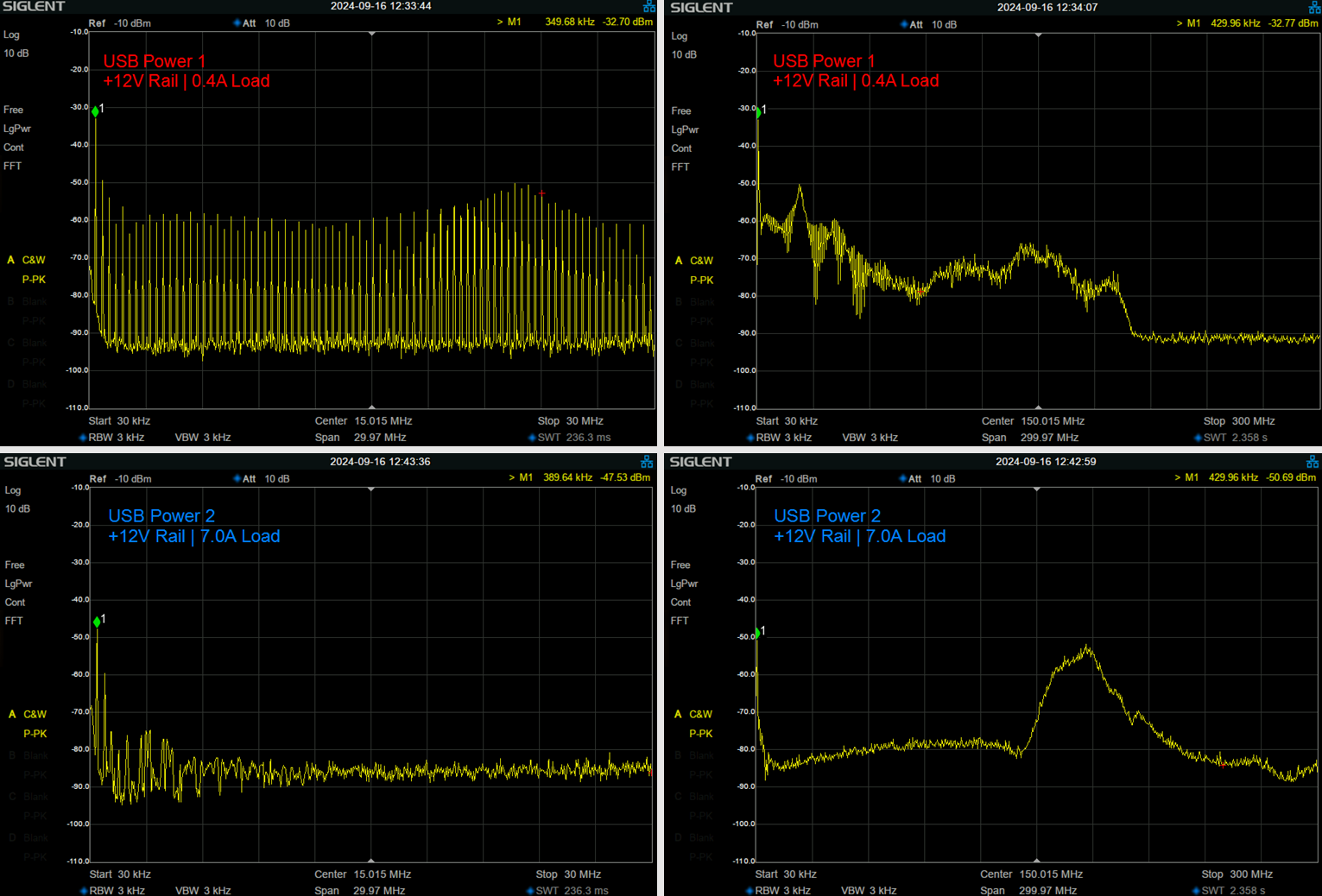
Low-Frequency and HF
In the low-frequency to HF range, the Meanwell brick looks pretty ugly. It seems to be doing some spread-spectrum clocking to lower the energy contained at any one frequency. The USB Power 2 doesn’t do that, but despite not using this trick, the peak at the fundamental of the switching frequency is still ~15dB lower than the Meanwell’s fundamental peak. In the HF range the Meanwell brick spreads noise across the HF spectrum at a level of about -60dBm. The USB Power 2 is lower than this by about 25dB across the HF range, and only about 10dB above the noise floor of the spec an at the chosen RBW.
Above HF
Above HF, The Meanwell brick is pretty noisy (between 5dB to 30dB worse than USB Power 2) until about 200MHz where it drops off to the ~noise floor. The USB Power 2 is pretty quiet (10dB~15dB above the noise floor) until around 150MHz~200MHz where we see some noticeable white noise. The peak of this noisy region is around -53dBm at ~175MHz. We are working now on mitigating this RF noise for the final production version. But aside from the already-small risk of annoying local VHF operators, noise in this range is unlikely to be problem for your rack.

